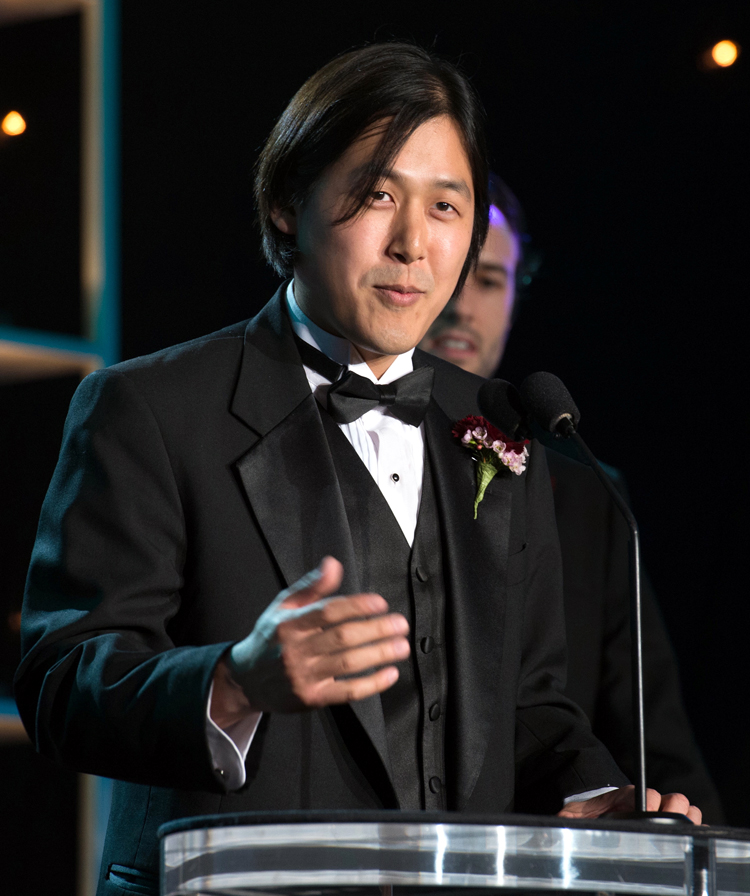
Future Effects
What will movies look like 100 years from now? Has the prevailing effects technology known as CGI (computer-generated imagery) already peaked, or is it just getting started? And is it making high-end effects more accessible or isolating lesser-budgeted potential graphics auteurs?
These are among the questions that Theodore Kim will ask — and attempt to answer — in an upcoming talk at UC Santa Barbara. An assistant professor in the Department of Media Arts and Technology, and recipient of the 2014 Harold J. Plous Award, Kim will give his lecture, “Visual Effects in the 21st Century,” on Monday, May 12. His presentation will begin at 4 p.m. in the McCune Conference Room, 6020 Humanities and Social Sciences Building. It is free and open to the public.
In his discussion of CGI’s evolution, Kim will address the technology’s impact on filmmaking at large and, more specifically, whether its status as the must-have means of graphic simulation has made the attainment of top-shelf effects more equitable. Or not.
“The big graphic spectacle has become de rigueur for any summer movie,” Kim said. “We have about 10 big blockbusters every year and basically those are the only movies that really get to use these techniques. They’re very complicated and they require a lot of manpower — armies of people behind computers. It’s pretty plutocratizing.
“The interesting question for the future is: What will it actually take for a small film crew to put something together?” he continued. “Maybe in 50 years there will be some black box we can all get and you can make anything you want with it. And it will be easy, or easier, because nothing is easy right now. It will take tons of research to get something like that to work and I don’t know how we’ll actually create this box, but that’s the interesting part. Hopefully, it will be something that academia will drive.”
In 2013, Kim won an Academy Award in Technical Achievement, in recognition of software that he (with three others) developed as a post-doc and that has become an industry-standard technique for smoke and fire effects. His Plous lecture will also revisit a point he made in his acceptance speech: that academia is the frequent, yet under-credited, birthplace of innovations that are enabling big changes in filmmaking.
“Many people don’t realize how much of a role academia has played in a lot of this technology, when in fact I would argue that almost all of this technology originated in academia,” Kim said. “Most techniques either came from academia, or everyone got their Ph.D. first, which prepared them to make these breakthroughs later on. This cannot be emphasized enough.”
Kim, who came to UC Santa Barbara from the University of Saskatchewan in 2011, completed his doctoral degree in computer science at the University of North Carolina, Chapel Hill. Before joining the faculty at the University of Saskatchewan, he held postdoctoral research positions at Cornell University and at IBM’s Thomas J. Watson Research Center.
Since winning the Academy Award, Kim has received one of the National Science Foundation’s prestigious CAREER Awards honoring early-career teacher-scholars deemed most likely to become the academic leaders of the 21st century. The plaudit is accompanied by a five-year financial stipend for research. Kim’s grant is going toward his work on a new technique to drastically speed up simulation times, which could enable the development of virtual humans and blood flow simulations.
Kim’s current research will also feature heavily in his Plous lecture.
One of the university’s most prestigious faculty honors, the Harold J. Plous Memorial Award is given annually to an assistant professor from the humanities, social sciences or natural sciences who has shown exceptional achievement in research, teaching and service to the university. Presented by the College of Letters and Science, the award was established in 1957 to honor the memory of Harold J. Plous, an assistant professor of economics.



